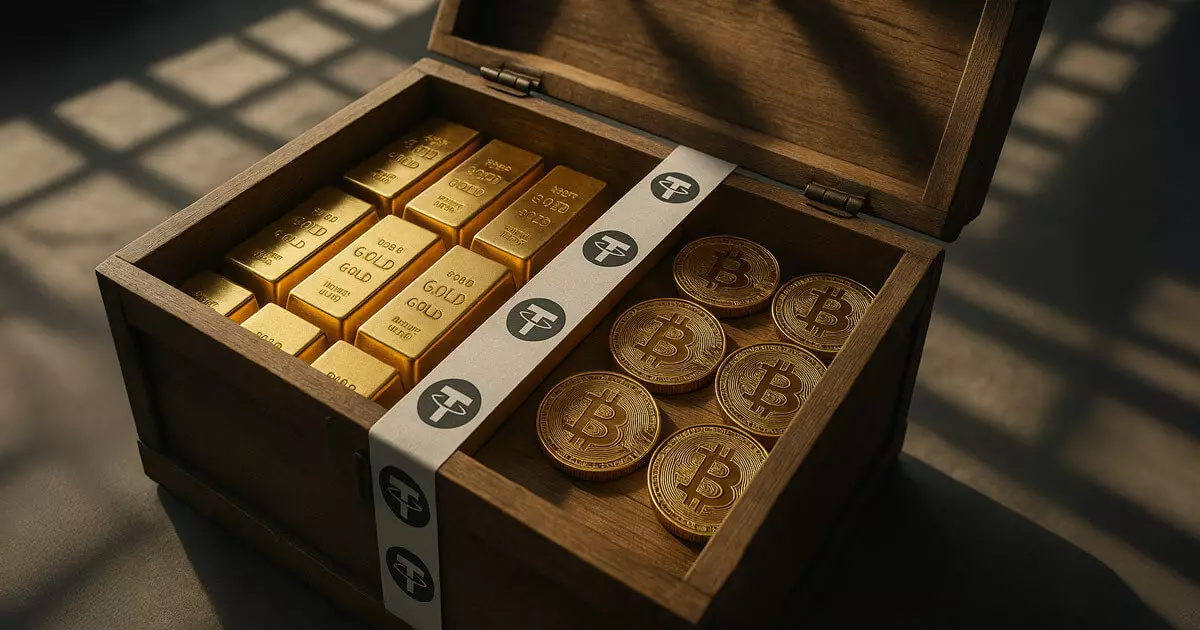In an era dominated by digital assets, Tether’s recent revelation of holding $8 billion in gold signals a daring yet calculated step towards stability. While most stablecoins rely solely on fiat-backed reserves, Tether’s move to accumulate nearly a tenth of its assets in precious metals suggests a desire to anchor its value in something tangible amid volatile markets. This decision challenges traditional notions of digital currency backing, positioning gold not merely as a historic store of value but as an active participant in the modern financial ecosystem. The sheer scale—almost holding entire 80-ton stockpiles—places Tether among the largest private owners of physical gold, reflecting a strategic intent to diversify risk, curb inflationary pressures, and bolster confidence in its USDT token.
The Regulatory Maze: Opportunities and Obstacles
However, Tether’s gold ambitions face considerable headwinds from regulatory frameworks evolving across the Atlantic. While the firm’s self-custody approach to bullion could offer lower costs and increased control, upcoming legislation—like the US’s GENUIS Act and Europe’s MiCA regulations—tighten restrictions on the types of collateral acceptable for stablecoins. By excluding commodities like gold, these laws threaten to force Tether to liquidate or segregate its precious metals holdings to comply with licensing requirements. The resulting regulatory pressure could hinder innovative diversification strategies, compelling the company into a delicate balancing act: maintaining reserve integrity without sacrificing compliance. This regulatory environment underscores a broader tension between fostering innovative financial products and protecting consumer interests, often leaning towards restrictiveness that could stifle the very agility that makes stablecoins appealing.
Market Dynamics and Geopolitical Implications
The geopolitical landscape further illuminates the wisdom of Tether’s gold holdings. As central banks in BRICS nations ramp up gold purchases—further inflating the commodity’s value—Tether’s strategic accumulation seems prescient. In a world where fiscal stability in the United States faces skepticism, gold stands as a bulwark against potential currency devaluation and financial crises. Tether’s argument that demand could surge if confidence declines hinges on a fundamental truth: investors are increasingly seeking refuge in assets that are not subject to the whims of fiat currency mismanagement or banking system failures. Its ability to convert its holdings into liquid, on-chain assets offers a unique advantage—combining the safety of gold with blockchain technology’s speed and transparency. Yet, this bold approach raises questions about the future role of commoditized backing in a digital economy that often prefers cash-like instruments over tangible assets.
From a center-right liberal viewpoint, Tether’s strategic shift toward gold reflects a pragmatic recognition of the limits of fiat currencies and the importance of preserving monetary sovereignty. While excessive reliance on physical reserves might appear conservative or even risky to some, it embodies a necessary reconciling of traditional financial prudence with innovative technology. Gold’s inclusion acts as a safeguard against unpredictable policy shifts, inflation, and geopolitical upheavals. Nonetheless, the regulatory environment remains the decisive factor—whether such innovations can flourish or be curtailed depends on policymakers’ willingness to balance consumer protection with the need for a resilient, adaptable financial future. At its core, Tether’s gold reserve strategy signals that in an uncertain world, anchoring digital assets to tangible, time-tested commodities may be the most intelligent risk management strategy available.


Leave a Reply